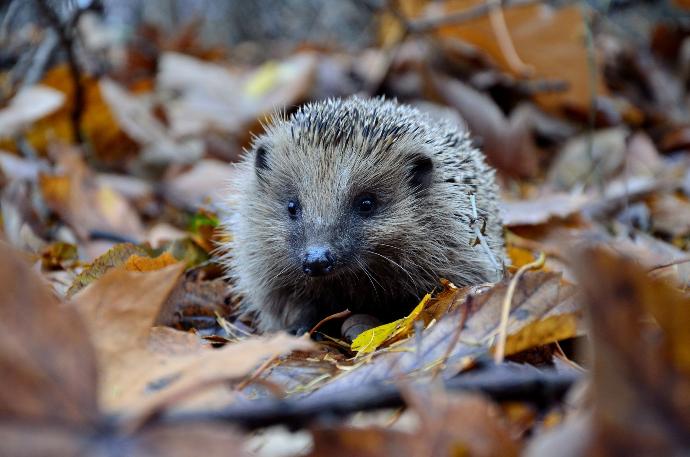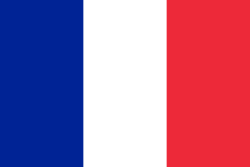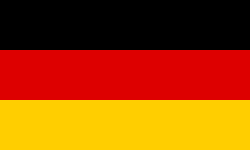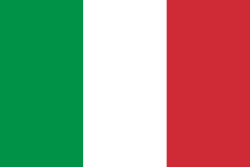En automne, on voit de plus en plus de hérissons errer dans les jardins. On est tenté de leur donner de l'eau et de la nourriture. Mais faut-il vraiment le faire ? Que leur donner ?

Faut-il nourrir les hérissons?
Généralement, les hérissons que nous croisons dans nos jardins trouvent suffisamment à manger. L’automne et le printemps constituent cependant des périodes difficiles pour les petits. Vous pouvez les nourrir, mais en respectant un certain nombre de règles, sans quoi vous ferez plus de mal que de bien.
Pourquoi ne pas nourrir les hérissons?
Il existe d’excellentes raisons de ne pas nourrir les hérissons que l’on croise au jardin. Les adultes, qui trouvent suffisamment de nourriture, n’ont généralement pas besoin de rations additionnelles.
De plus, vous risquez de perturber leur rythme. Lorsque la nourriture qu’il tire de son environnement naturel diminue à l’automne, le hérisson se retire dans ses quartiers d’hiver pour entrer en hibernation. Si vous le nourrissez, il continuera à venir dans votre jardin et son cycle naturel sera perturbé.
Les jeunes hérissons, quant à eux, ont parfois plus de difficultés à se nourrir. Mais ils doivent apprendre à chercher leur propre nourriture. Si vous leur déposez chaque jour un grand bol d’aliments, il se peut qu'ils n'apprennent pas à se débrouiller seuls.
Pour savoir si un hérisson est bien nourri, observez sa stature : si son corps a une forme de poire, il ne manque de rien.
Quand nourrir les hérissons au jardin?
Il peut néanmoins arriver qu’un hérisson ait besoin de votre aide. C’est le cas en automne, pour les jeunes animaux nés tardivement, qui ne parviennent pas à accumuler suffisamment de graisse pour l’hiver. De même, les femelles hérissons peuvent être affaiblies par l'élevage des petits.
Si vous avez l'impression qu'un hérisson à besoin d'aide, contactez en premier lieu une station pour hérisson. Ces experts vous donneront les meilleurs conseils pour aider votre hérisson. Selon la station, vous pouvez prendre contact par téléphone, mail ou même passer une visite. Voici une liste des stations pour hérisson en Suisse : https://www.pro-igel.ch/igel-in-not
En hiver, vous pouvez parfois trouver un hérisson amaigri. Dans ce cas, vous pouvez lui laisser de la nourriture. Au printemps, le temps est parfois instable et le sol est encore gelé. Les hérissons ont du mal à trouver suffisamment de nourriture. Vous pouvez alors proposer un supplément.
En été, s’il fait très chaud, vous pouvez mettre un bol d'eau à la disposition des hérissons pour qu'ils aient suffisamment à boire.

Que peut-on donner à manger aux hérissons?
Les hérissons sont des insectivores et mangent des insectes, ainsi que leurs larves, parfois aussi des charognes. Certains apprécient les racines. En principe, les hérissons ont besoin d'une alimentation riche en protéines. Avant de donner de la nourriture, contacter une station pour hérisson afin d'assurer que cet apport est nécessaire.
Vous trouverez en animalerie des aliments secs spécialement formulés pour les hérissons. Ce type de nourriture peut être utilisé, mais il est souvent trop riche en hydrates de carbone et trop sec. Des pâtés humides pour chats sont préférables. Veillez à ce que ces aliments contiennent quasiment que de la viande et surtout pas de farine.
Les hérissons mangent aussi de la viande hachée, des œufs à la coque ou des œufs brouillés. Dans tous les cas, évitez d’assaisonner ces aliments.
Que faut-il éviter absolument
Vous devez éviter le pain, le lait et le chocolat. Ces aliments provoquent une diarrhée qui se révèle rapidement mortelle, puisque l’animal se déshydrate. Vous ne saurez pas forcément que votre hérisson est allé mourir dans un buisson, puisqu’à l’image de nombreux animaux sauvages, il se cache pour mourir.
Im Herbst sieht man immer häufiger Igel durch die Gärten streifen. Man ist versucht, ihnen Wasser und Futter zu geben. Aber muss man das wirklich tun? Was sollte man ihnen geben?

Sollte man Igel füttern?
Normalerweise finden Igel, denen wir in unseren Gärten begegnen, genug zu fressen. Im Herbst und Frühjahr ist es für die Kleinen jedoch schwierig. Sie können sie füttern, sollten dabei aber einige Regeln beachten, da Sie sonst mehr Schaden anrichten als helfen.
Warum sollte man Igel nicht füttern?
Es gibt viele gute Gründe, Igel, denen man im Garten begegnet, nicht zu füttern. Erwachsene Igel, die genügend Nahrung finden, brauchen in der Regel keine zusätzlichen Futterrationen.
Ausserdem könnte man ihren Rhythmus stören. Wenn es im Herbst weniger Nahrung in der Umgebung gibt, zieht sich der Igel in sein Winterquartier zurück, um Winterschlaf zu halten. Wenn Sie ihn füttern, wird er weiterhin in Ihren Garten kommen und sein natürlicher Zyklus wird gestört.
Junge Igel hingegen haben manchmal mehr Schwierigkeiten, sich zu ernähren. Sie müssen aber lernen, sich ihre Nahrung selbst zu suchen. Wenn Sie ihnen jeden Tag eine grosse Schüssel mit Futter hinstellen, kann es sein, dass sie nicht lernen, sich selbst zu versorgen.
Ob ein Igel gut ernährt ist, erkennen Sie an seiner Statur: Wenn sein Körper birnenförmig ist, fehlt es ihm an nichts.
Wann sollte man Igel im Garten füttern?
Es kann jedoch vorkommen, dass ein Igel Ihre Hilfe braucht. Das ist im Herbst bei spät geborenen Jungtieren der Fall, die sich nicht genügend Winterspeck ansetzen können. Ebenso können Igelweibchen durch die Aufzucht der Jungen geschwächt sein.
Wenn Sie den Eindruck haben, dass ein Igel Hilfe braucht, wenden Sie sich als Erstes an eine Igelstation. Diese Experten werden Ihnen die besten Ratschläge geben, wie Sie Ihrem Igel helfen können. Je nach Station können Sie telefonisch oder per E-Mail Kontakt aufnehmen oder sogar einen Besuch abstatten. Hier ist eine Liste der schweizer Igelstationen: https://www.pro-igel.ch/igel-in-not
Im Winter können Sie manchmal einen abgemagerten Igel vorfinden. In diesem Fall können Sie ihm etwas Futter hinstellen. Im Frühling ist das Wetter manchmal unbeständig und der Boden ist noch gefroren. Für Igel ist es dann schwierig, ausreichend Nahrung zu finden. Sie können dann zusätzliches Futter anbieten.
Wenn es im Sommer sehr heiss ist, können Sie den Igeln eine Schale mit Wasser zur Verfügung stellen, damit sie genug zu trinken haben.

Was kann man Igeln füttern?
Igel sind Insektenfresser und fressen Insekten und deren Larven, manchmal auch Aas. Manche mögen auch Wurzeln. Grundsätzlich brauchen Igel eine proteinreiche Nahrung. Bevor Sie Igel füttern, sollten Sie eine Igelstation kontaktieren, um sicherzustellen, dass die Fütterung notwendig ist.
In Tierhandlungen erhalten Sie Trockenfutter, das speziell für Igel zusammengestellt wurde. Diese Art von Futter kann zwar verwendet werden, ist aber oft zu kohlenhydratreich und zu trocken. Feuchte Pasten für Katzen sind vorzuziehen. Achten Sie darauf, dass dieses Futter fast nur Fleisch und vor allem kein Mehl enthält.
Igel fressen auch Hackfleisch, gekochte Eier oder Rühreier. Vermeiden Sie es in jedem Fall, diese Nahrungsmittel zu würzen. Sie können auch Haferflocken und Kleie füttern.
Was sollten Sie unbedingt vermeiden?
Sie sollten Brot, Milch und Schokolade meiden. Diese Nahrungsmittel lösen Durchfall aus, der schnell tödlich ist, da das Tier dehydriert. Sie werden nicht unbedingt erfahren, dass Ihr Igel zum Sterben in ein Gebüsch gegangen ist, da er sich wie viele andere wilde Tiere zum Sterben versteckt.
In autumn, we see more and more hedgehogs wandering around our gardens. It's tempting to give them food and water. But should we really do it? What to give them?

Should we feed the hedgehogs?
Usually, the hedgehogs we see in our gardens find enough to eat. However, autumn and spring are difficult times for the young. You can feed them, but there are a few rules to follow, otherwise you will do more harm than good.
Why not feed hedgehogs?
There are good reasons not to feed hedgehogs in the garden. Adults, who find enough food, usually do not need additional rations.
Also, you may be disrupting their rhythm. When food from the natural environment decreases in the fall, hedgehogs retreat to their winter quarters to hibernate. If you feed them, they will continue to come to your garden and their natural cycle will be disrupted.
Young hedgehogs, on the other hand, may have more difficulty feeding themselves. But they must learn to look for their own food. If you put a large bowl of food in front of them each day, they may not learn to fend for themselves.
To tell if a hedgehog is well fed, look at its stature: if its body is pear-shaped, it is not lacking anything.
When to feed hedgehogs in the garden?
There are times, however, when a hedgehog needs your help. This is the case in autumn, for young animals born late, which do not manage to accumulate enough fat for the winter. Also, female hedgehogs may be weakened by raising young.
If you think a hedgehog needs help, contact a hedgehog station first. These experts will give you the best advice on how to help your hedgehog. Depending on the station, you can get in touch by phone, e-mail or even drop in for a visit. Here's a list of hedgehog stations in Switzerland: https://www.pro-igel.ch/igel-in-not
In the winter, you may sometimes find a hedgehog that has lost weight. In this case, you can leave some food for it. In spring, the weather may be unstable and the ground is still frozen. Hedgehogs have a hard time finding enough food. You can offer a supplement.
In the summer, if the weather is very hot, you may want to provide a bowl of water so that the hedgehogs have enough to drink.

What can I feed my hedgehogs?
Hedgehogs are insectivores and eat insects and their larvae, sometimes also carrion. Some hedgehogs like to eat roots. In principle, hedgehogs need a diet rich in protein. Before giving any food, contact a hedgehog station to make sure it's necessary.
Pet shops sell dry food specially formulated for hedgehogs. This type of food can be used, but is often too rich in carbohydrates and too dry. Wet cat food is preferable. Make sure that these foods contain almost exclusively meat and, above all, no flour.
Hedgehogs also eat minced meat, boiled eggs or scrambled eggs. In any case, avoid seasoning these foods. You can also feed oatmeal and bran.
How do you feed hedgehogs?
For example, you can prepare the following recipe: 100 grams of canned cat food, two tablespoons of dry hedgehog food or oatmeal.
The best solution is to place the food outside at dusk, as hedgehogs are nocturnal animals. Clean the food bowls or plates, otherwise pathogens may develop. Throw away leftover food.
A shallow bowl of water next to the food allows hedgehogs to get enough water.
What to avoid
You should avoid bread, milk and chocolate. These foods cause diarrhea, which is quickly fatal as the animal becomes dehydrated. You may not know that your hedgehog has gone into a bush to die, as many wild animals hide to die.
In autunno si vedono sempre più spesso i ricci aggirarsi per il giardino. La tentazione di dare loro cibo e acqua è forte. Ma è davvero il caso di farlo? Cosa dare loro?

I ricci devono essere nutriti?
Di solito i ricci che vediamo nei nostri giardini trovano abbastanza da mangiare. Tuttavia, l'autunno e la primavera sono periodi difficili per i giovani. Potete dar loro da mangiare, ma ci sono alcune regole da seguire, altrimenti farete più male che bene.
Perché non dare da mangiare ai ricci?
Ci sono buoni motivi per non dare da mangiare ai ricci in giardino. Gli adulti, che trovano cibo a sufficienza, di solito non hanno bisogno di razioni aggiuntive.
Inoltre, si rischia di disturbare il loro ritmo. Quando in autunno le scorte di cibo dell'ambiente naturale diminuiscono, il riccio si ritira nei suoi quartieri invernali per andare in letargo. Se gli date da mangiare, continueranno a venire nel vostro giardino e il loro ciclo naturale sarà interrotto.
Per i ricci giovani può essere più difficile nutrirsi da soli. Ma devono imparare a cercarsi il cibo da soli. Se gli mettete davanti una grande ciotola di cibo ogni giorno, potrebbero non imparare a cavarsela da soli.
Per sapere se un riccio è ben nutrito, osservate la sua statura: se il suo corpo è a forma di pera, non gli manca nulla.
Quando dare da mangiare ai ricci in giardino?
A volte un riccio può avere bisogno del vostro aiuto. Questo accade in autunno per gli animali giovani che nascono tardi e non riescono ad accumulare abbastanza grasso per l'inverno. Inoltre, le femmine di riccio possono essere indebolite dall'allevamento dei piccoli.
Se ritenete che un riccio abbia bisogno di aiuto, la prima cosa da fare è contattare una stazione per ricci. Questi esperti vi daranno i migliori consigli su come aiutare il vostro riccio. A seconda della stazione, potete contattarli per telefono, per e-mail o anche per una visita. Ecco un elenco di santuari per ricci: https://www.pro-igel.ch/igel-in-not
In inverno può capitare di trovare un riccio emaciato. In questo caso, potete lasciargli del cibo. In primavera il tempo può essere instabile e il terreno è ancora ghiacciato. I ricci hanno difficoltà a procurarsi cibo a sufficienza. In questo caso è possibile offrire un supplemento.
In estate, se il clima è molto caldo, è possibile fornire una ciotola d'acqua in modo che i ricci possano bere a sufficienza.

Cosa si può dare da mangiare ai ricci?
I ricci sono insettivori e si nutrono di insetti e delle loro larve, talvolta anche di carogne. Alcuni ricci amano mangiare le radici. In linea di massima, i ricci hanno bisogno di una dieta ricca di proteine. Prima di somministrare qualsiasi alimento, contattate una stazione per ricci per accertarvi che sia necessario.
I negozi di animali vendono cibo secco appositamente formulato per i ricci. Questo tipo di cibo può essere utilizzato, ma spesso è troppo ricco di carboidrati e troppo secco. È preferibile il cibo umido per gatti. Assicuratevi che questi alimenti contengano quasi esclusivamente carne e, soprattutto, niente farina.
I ricci mangiano anche carne macinata, uova sode o strapazzate. In ogni caso, evitate di condire questi alimenti. È possibile somministrare anche farina d'avena e crusca.
Come nutrire i ricci?
Ad esempio, si può preparare la seguente ricetta: 100 grammi di cibo in scatola per gatti, due cucchiai di cibo secco per ricci o farina d'avena.
La soluzione migliore è collocare il cibo all'esterno all'imbrunire, poiché i ricci sono animali notturni. Pulire le ciotole o i piatti del cibo, altrimenti si possono sviluppare agenti patogeni. Gettare gli avanzi di cibo.
Una ciotola poco profonda con acqua accanto al cibo permette ai ricci di avere acqua a sufficienza.
Cosa evitare
Si dovrebbero evitare pane, latte e cioccolato. Questi alimenti provocano diarrea, che diventa rapidamente fatale perché l'animale si disidrata. Potreste non sapere che il vostro riccio è andato a morire in un cespuglio, perché molti animali selvatici si nascondono per morire.




Nourrir les hérissons: ce qu’il faut savoir